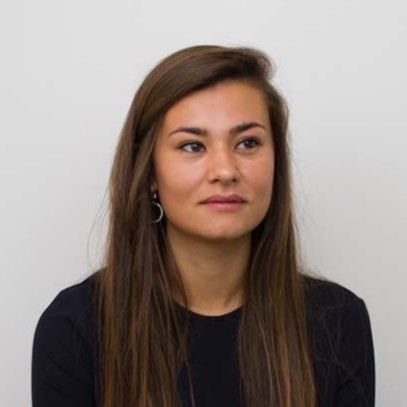
What is Regulatory Compliance?
Regulatory compliance is the process of following set procedures in order to meet standards set by boards of oversight. Most often, these regulatory policies are set to reduce the risk of negative events occurring, such as physical accidents or unauthorized access to information or money.
Written by a human
Both governments and industry panels have regulatory powers, measuring how well parties and individuals comply with the rules in place. Sometimes regulatory non–compliance is obvious – a risk event occurs which then has further negative consequences. However, most industries require compliant parties to document their regulatory compliance in displays of record keeping due diligence.
Industries affected by regulations
Company owners and employees within many industries must follow regulations, but some organisations are more affected than others. In particular:
- Finance: to mitigate market–wide risks, promote fairness and safeguard investors
- Law: to set the guidelines for carrying out legislations
- Healthcare: to deliver high quality care and ensure that practitioners are appropriately qualified
- Construction: to ensure safety, maintain accountability and meet environmental targets through the environmental protection agency
Examples of finance regulation and compliance
Here are some of the regulations that exist in the financial industry:
- General data protection regulation (GDPR)
- California consumer privacy act (CCPA)
- FINRA 2010
- and other relevant laws
A prime example of a newer regulation in the finance industry is the Digital Operational Resilience Act (DORA). Coming into force in 2024, we were able to see how organisations approached regulatory reporting compliance in real time.
DORA requires parties to meet five key compliance requirements:
- ICT risk management: put better internal controls in place to prevent cyber risk events
- Incident reporting: use the classification of risk events to determine the correct response plan in every scenario
- Third party risk management: verify suppliers (Know Your Vendor) and secure the entire supply chain
- Stress testing: this regulatory requirement involves regularly assess resilience through scenario testing
- Intelligence sharing: report attempted and successful operational disruptions to industry and enforcement agencies
As for compliance standards, the average financial and banking firm in the UK has reportedly spent over £1 million on changes to their systems, policies and procedures in their compliance efforts And yet, a reported 43% were still woefully unprepared up on the compliance deadline.
Enforcement actions began on January 17th 2025, so the ball is certainly back in the regulators court on DORA.
Importance of regulatory compliance standards
Regulatory compliance is a priority for many businesses because the consequences of non– compliance have the ability to ruin everything.
If found out by regulatory audits or investigators, non–compliance typically leads to enforcement actions. This may include:
- Written warnings to change aspects of processes for better compliance
- Financial penalties, for example company and individual fines
- Federal punishments like jail time
- Industry–related sanctions such as the loss of a license or qualifications to practice
Not to mention the negative impacts if a risk event occurs. Companies most often report that the reputational consequences of risk events are the worst, as they affect the retention of current customers and make it harder to acquire new business. That’s because once the trust is gone after a data security or fraud event, for example, it’s difficult to recover.
As such, the financial consequences of struggling with clients is also likely to take its toll. In fact, the 2008 financial crisis is a prime example because it was, in part, caused by a lack of strong regulation in the housing and mortgage sector. This caused widespread financial and reputational damages, straining trust in the entire investment sector for years to come.
Fortunately, the industry standards and relevant regulations have since been updated to plug the compliance gaps.
An example of non–compliance enforcement actions
In November 2024, a senior financial advisor, Philip Pryke, who was also authorized as the compliance manager at his firm was fined almost £1.4 million by the FCA.
Their investigation revealed that during 2015–2019, Mr Pryke and his associates advised 986 customers to transfer their pensions from a Defined Benefit Scheme into an alternative. But this didn’t match with the guidance from authorities, creating a presumption of unsuitability.
Mr Pryke was responsible for overseeing the company’s regulatory compliance policy, but failed to perform his duties effectively and instead chose to prioritize the firm’s profits. The rules require pension advisors to obtain an adequate spread of information relating to their clients financial situations, including risk appetite, goals and history.
Alongside the fine, Mr Pryke was also prohibited from “performing any function in relation to any regulated activity carried on by an authorized person, exempt person, or exempt professional firm”.
Here are some other compliance issue examples in the finance industry:
| Example of non–compliance | Consequences |
| Did not follow information sharing rules, leading to intrust on from cyberattackers and an information leak | Must notify the information subject, leading to potential stress and distrust Wider reputational damage, leading to difficulty in future client acquisition Must disrupt operations to resecure systems |
| Did not complete due diligence for credit check, meaning credit was extended to a high–risk individual | Risk of non–repayment, resulting in financial losses Risk of future difficulty for the customer due to the record of default Risk of enforcement action from the regulator around suitability |
| Failure to document and securely establish record of employee access and actions inside IT system | Risk of insider fraud as lack of accountability around actions Very hard to determine timeline of events and investigate past errors Potential costs resulting in a lack of efficiency |
How to implement regulatory compliance at your financial firm?
Compliance monitoring is a huge subject, with varying rules and requirements depending on the exact regulations in place. That being said, there is an obvious place to start; by partnering with a regulatory intelligence solution which provides a done–for–you experience.
Global Relay helps clients in complying with communications regulations around the world, with fully integrated solutions to help you mitigate risk and stay ahead of the evolving regulatory change landscape. Connect data from any channel when you book a demo.



